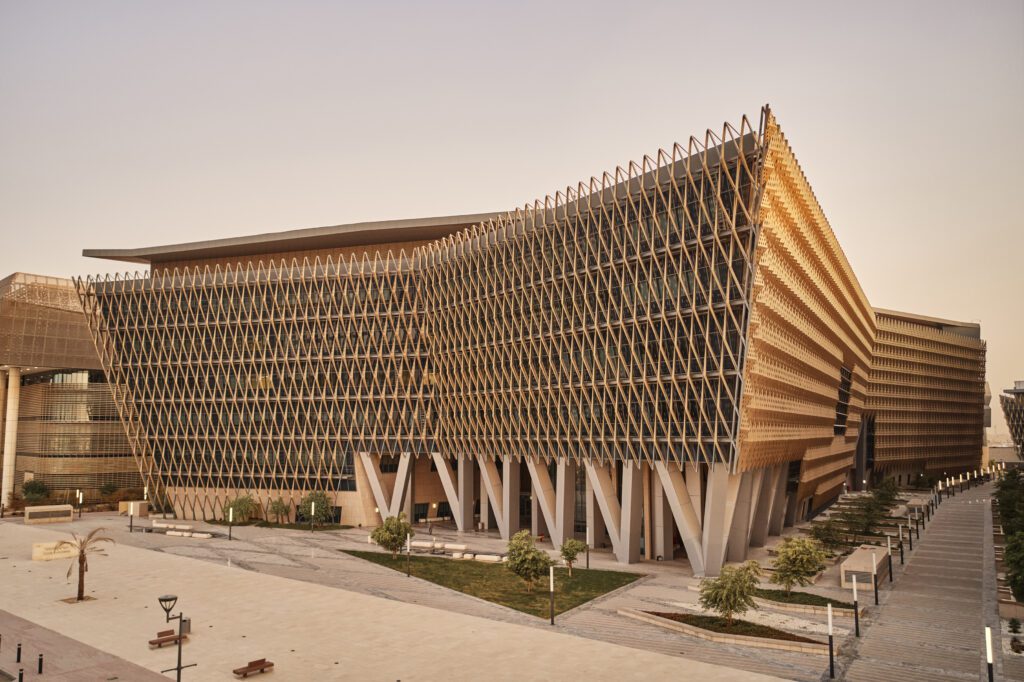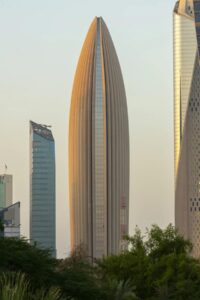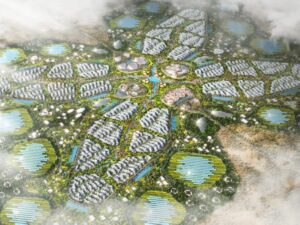Functional Facades
Options for sustainability through custom facade design
View Post By Zaina Naji Al Ali
By Zaina Naji Al Ali
Published February 27, 2024
KUWAIT: In shaping Kuwait’s architectural narrative, architects emerge as crucial catalysts not merely for cultural preservation, but also for driving economic diversity, particularly in line with the goals outlined in Vision 2035. Sustainability has become critical for Kuwait in minimizing the environmental impact of its oil production, which accounts for nearly 43 percent of its GDP. Architects leading urbanization and sustainable infrastructure development play a role in attracting foreign investment and enhancing construction-related industries, generating employment opportunities and fueling economic growth.
Issam Al Sager, group CEO of the National Bank of Kuwait claimed that NBK endeavors to develop ESG (Environmental Social Governance) methods to become the central considerations in planning long term and sustainable strategies. The design integrates environmentally responsible elements, coupled with architectural advancement culminating in an energy-efficient architecture that safeguards workplaces from Kuwait’s extreme weather conditions.
The northern boundary of the skyscraper presents an artfully curved design, offering an extensive and picturesque vista of the Arabian Gulf. A succession of fins are incorporated along the sun path of the building, and extend to the complete height of the skyscraper. Vertical fins serve a dual purpose as structural elements, and optimizing material usage. Vertical fins intelligently track the sun’s trajectory, providing sufficient shade in the summer and maximizing sunlight exposure in the winter.

The constructive employment of fins minimizes the reliance on air conditioning systems, contributing to efficient energy usage. This architectural plan increases floor spaces on upper floors “by tapering the floorplates inwards towards the base, and provides self-shading with the overhanging floor plates above the offices below.” Additional environmentally conscious components include a gray water recycling system. According to the National Bank of Kuwait, such recycling systems are utilized to compensate for approximately 60 percent of WC flushing water consumption, and diminishing the use of HVAC (heating, ventilation, and air conditioning) systems to avert ozone depletion and alleviate global warming impacts.
The building’s design, crafted in accordance with intensive environmental analysis, draws on the ancient science and appeal of traditional mashrabiya screens, which offer natural ventilation, shading, and privacy. According to CambridgeSeven, traditional mashrabiya screens in Islamic design are architectural components for privacy. In contrast, these screens have been strategically oriented on the building to fulfill their primary function of solar shading.
The subtle inclination of the exterior metal panels contributes to a self-shading design, facilitating outward views while avoiding any unnecessary heat to enter and harm the interior of the building. Complementing this, the interior of the building is protected from harsh sun rays by a series of diamond shaped structures, crafted from perforated metal panels, to guide views towards the outside and counteract the effects of solar glare. To manage light from different cardinal directions, louvers adorn each face of the building. This deliberate arrangement ensures that areas like the north receive optimal indirect light, creating an ideal environment for art studios.
Kuwait’s blueprint for a self-reliant smart city, embodies sustainability through its focus on pedestrian-centric urban planning, green infrastructure, and cutting-edge technological fusion. Employing blue-green infrastructure, the project aims to simulate natural water cycles while enhancing public spaces. The landscape hosts a plethora of engineered natural areas, fostering biodiversity, capturing rainwater, curbing floods, and purifying air and water.
This vision prioritizes pedestrian accessibility, utilizing meticulous urban density to maximize green spaces, alleviating urban heat and promoting a salubrious climate. Centralized multi functional zones minimize travel distances, while sensor technology fine-tunes indoor environments for optimal comfort and efficiency. Economic Significance of Sustainable Architecture Green economy practices not only avoid impeding economic growth, but also promote new markets and business opportunities, elevating GDP growth and job creation while having a positive influence on the environment and society.

Corporate commitment is vital in this shift, as incorporating sustainability into corporate practices reveals the potential for profitability and societal-environmental well-being. The National Bank of Kuwait Headquarters is Kuwait’s first LEED Gold-certified building, having received the LEED v2009 Certificate for Building Design and Construction from the USGBC. It is additionally the third largest structure in the MENA area to acquire this certificate, as well as one of the top 2 percent of the world’s largest structures in this category. As epitomized by landmarks like the NBK Headquarters, Kuwait University COLS, and the visionary proposal of XZero City, Kuwait’s commitment to a self-sufficient city represents a forward-looking paradigm, where sustainability across social, economic, and environmental dimensions converges to shape a resilient, thriving future.
Architizer - November 24, 2022
Principal Patti Intrieri, AIA answers questions from Architizer about the design challenges of the College of Life Sciences
View PostMetal Architecture Magazine - July 1, 2022
CambridgeSeven wins Sustainability Award from Metal Architecture Magazine
View Post